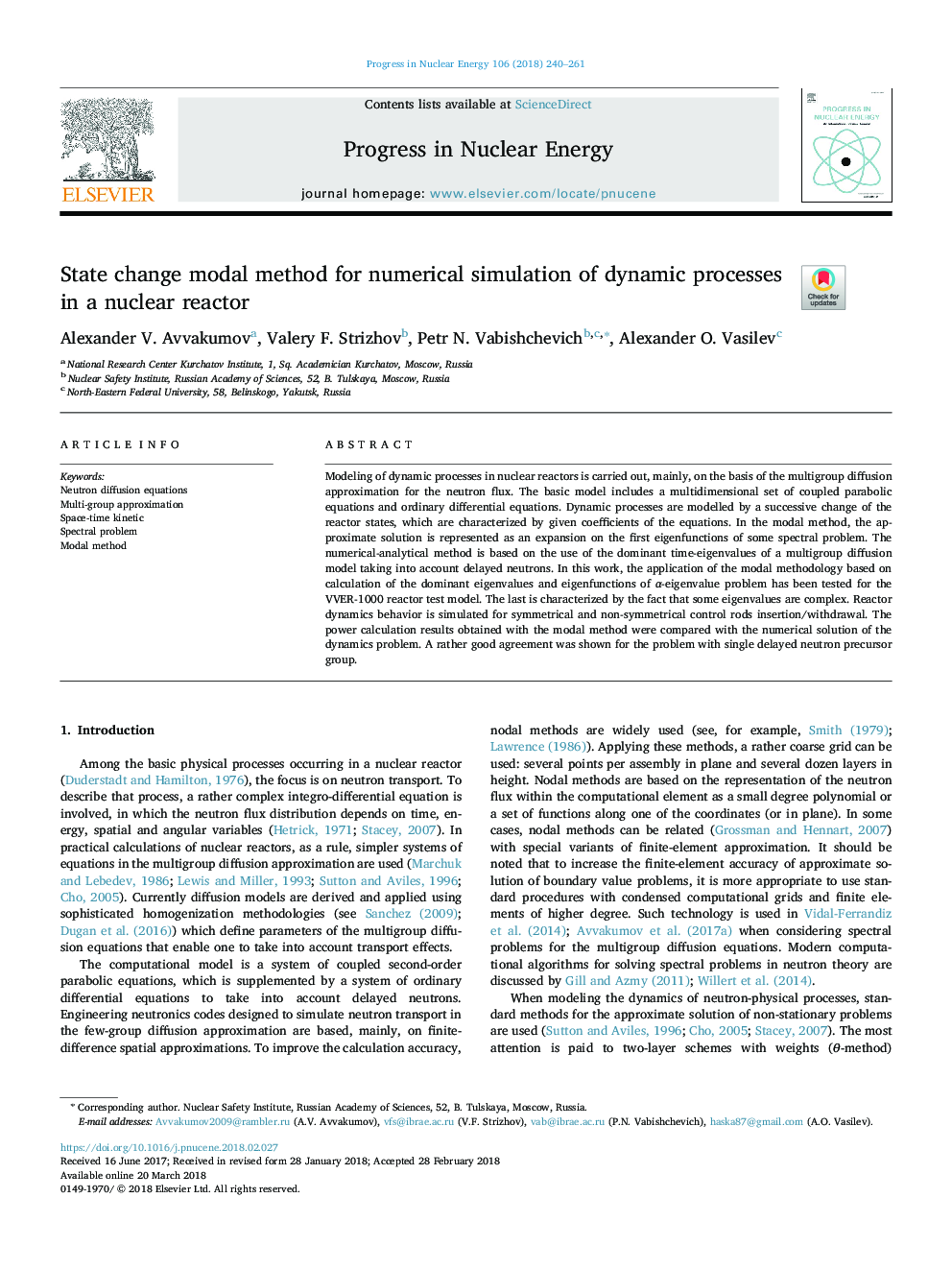| Article ID | Journal | Published Year | Pages | File Type |
|---|---|---|---|---|
| 8084288 | Progress in Nuclear Energy | 2018 | 22 Pages |
Abstract
Modeling of dynamic processes in nuclear reactors is carried out, mainly, on the basis of the multigroup diffusion approximation for the neutron flux. The basic model includes a multidimensional set of coupled parabolic equations and ordinary differential equations. Dynamic processes are modelled by a successive change of the reactor states, which are characterized by given coefficients of the equations. In the modal method, the approximate solution is represented as an expansion on the first eigenfunctions of some spectral problem. The numerical-analytical method is based on the use of the dominant time-eigenvalues of a multigroup diffusion model taking into account delayed neutrons. In this work, the application of the modal methodology based on calculation of the dominant eigenvalues and eigenfunctions of α-eigenvalue problem has been tested for the VVER-1000 reactor test model. The last is characterized by the fact that some eigenvalues are complex. Reactor dynamics behavior is simulated for symmetrical and non-symmetrical control rods insertion/withdrawal. The power calculation results obtained with the modal method were compared with the numerical solution of the dynamics problem. A rather good agreement was shown for the problem with single delayed neutron precursor group.
Keywords
Related Topics
Physical Sciences and Engineering
Energy
Energy Engineering and Power Technology
Authors
Alexander V. Avvakumov, Valery F. Strizhov, Petr N. Vabishchevich, Alexander O. Vasilev,
